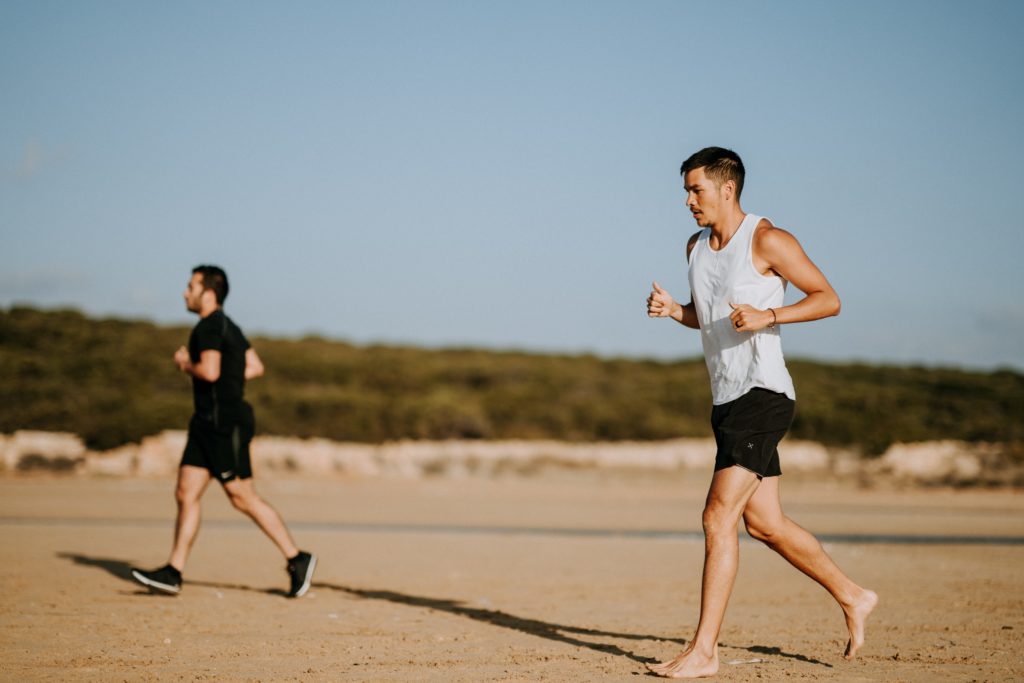The 2nd installment in our series of expert webinars
Is there a right way to run? The short answer is no.
On Wednesday morning, April 29, we had the pleasure of sharing a cuppa with Dr Christian Barton.
If you missed the live Q&A, watch the recording to see Christian speak about running re-training, researching with Rich Willy and Irene Davis and RISK (Reducing load, Improving capacity, Shifting load, Keep adapting).
Additional expertise provided by running experts Dr Richie Johnston and LASEM PhD candidate James Alexander. Hosted by Dr Sean Docking.
Keep an eye on the blog and our Facebook page for info on our next Happy Hour Expert Webinar… coming soon!
References/links listed as they appear in the webinar.
- Elite Female Marathon Runner – Priscah Jeptoo
- Benefits and Risks Associated with changing foot strike pattern.
Anderson, L. M., Bonanno, D. R., Hart, H. F., & Barton, C. J. (2020). What are the benefits and risks associated with changing foot strike pattern during running? A systematic review and meta-analysis of injury, running economy, and biomechanics. Sports Medicine, 50(5), 885-917. doi:10.1007/s40279-019-01238-y
https://link.springer.com/article/10.1007%2Fs40279-019-01238-y
- “Cliffy Young” Australia’s most formidable ultra-marathon runner
https://www.youtube.com/watch?v=2OD96zocXRU
- Managing RISK – Editorial in Physical Therapy in Sport
Barton, C. (2018). Managing RISK when treating the injured runner with running retraining, load management and exercise therapy. Physical Therapy in Sport, 29, 79-83.
https://www.sciencedirect.com/science/article/abs/pii/S1466853X1730514X?via%3Dihub
- Running Myth Infographic: Matching shoe features to foot-type
http://semrc.blogs.latrobe.edu.au/running-myth-3-wearing-wrong-shoe-type-foot-causes-injury/
- Stephen Seiler – 80/20 Principle
Seiler, Stephen. (2010). What is Best Practice for Training Intensity and Duration Distribution in Endurance Athletes?. International journal of sports physiology and performance. 5. 276-91. 10.1123/ijspp.5.3.276.
- Training Load and Injury Risk
Johnston, R., Cahalan, R., Bonnett, L., Maguire, M., Nevill, A., Glasgow, P., . . . Comyns, T. (2019). Training load and baseline characteristics associated with new injury/pain within an endurance sporting population: A prospective study. International Journal of Sports Physiology and Performance, 14(5), 590-597. doi:10.1123/ijspp.2018-0644
https://journals.humankinetics.com/view/journals/ijspp/14/5/article-p590.xml
- The effect of self-reported sleep duration on pain intensity and injury.
Johnston, R., Cahalan, R., Bonnett, L., Maguire, M., Glasgow, P., Madigan, S., . . . Comyns, T. (2020). General health complaints and sleep associated with new injury within an endurance sporting population: A prospective study. Journal of Science and Medicine in Sport, 23(3), 252-257. doi:10.1016/j.jsams.2019.10.013
https://www.sciencedirect.com/science/article/abs/pii/S1440244018308545
9. Pain Guided Hopping Intervention in Runner’s with mid-portion AT. Sancho, I., Morrissey, D., Willy, R. W., Barton, C., & Malliaras, P. (2019). Education and exercise supplemented by a pain-guided hopping intervention for male recreational runners with midportion achilles tendinopathy: A single cohort feasibility study. Physical Therapy in Sport, 40, 107-116. doi:10.1016/j.ptsp.2019.08.007
https://www.sciencedirect.com/science/article/abs/pii/S1466853X19303116?via%3Dihub
- Mechanotherapy
Khan, K., & Scott, A. (2009). Mechanotherapy: How physical therapists’ prescription of exercise promotes tissue repair. British Journal of Sports Medicine, 43(4), 247-24752.
https://bjsm.bmj.com/content/43/4/247

